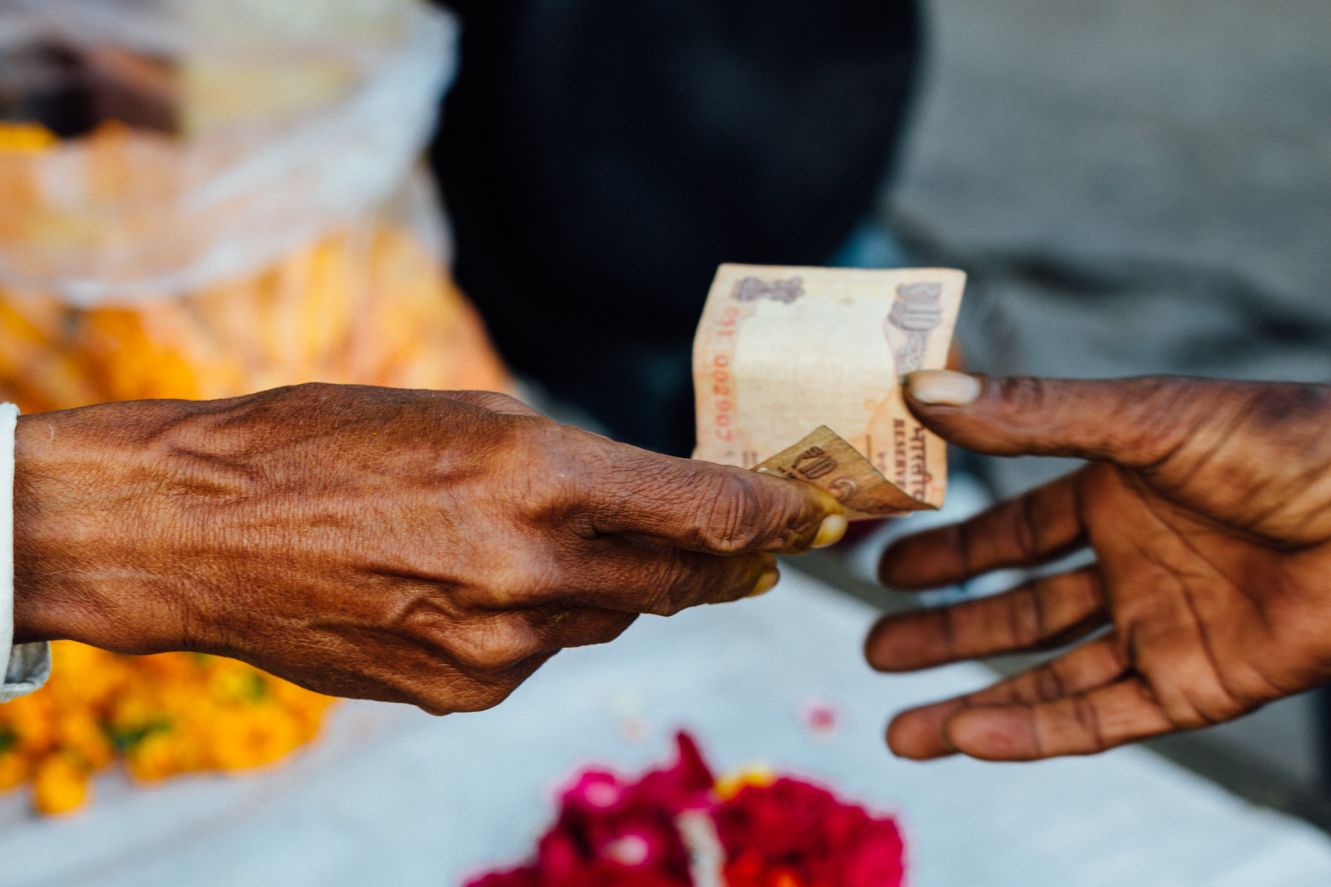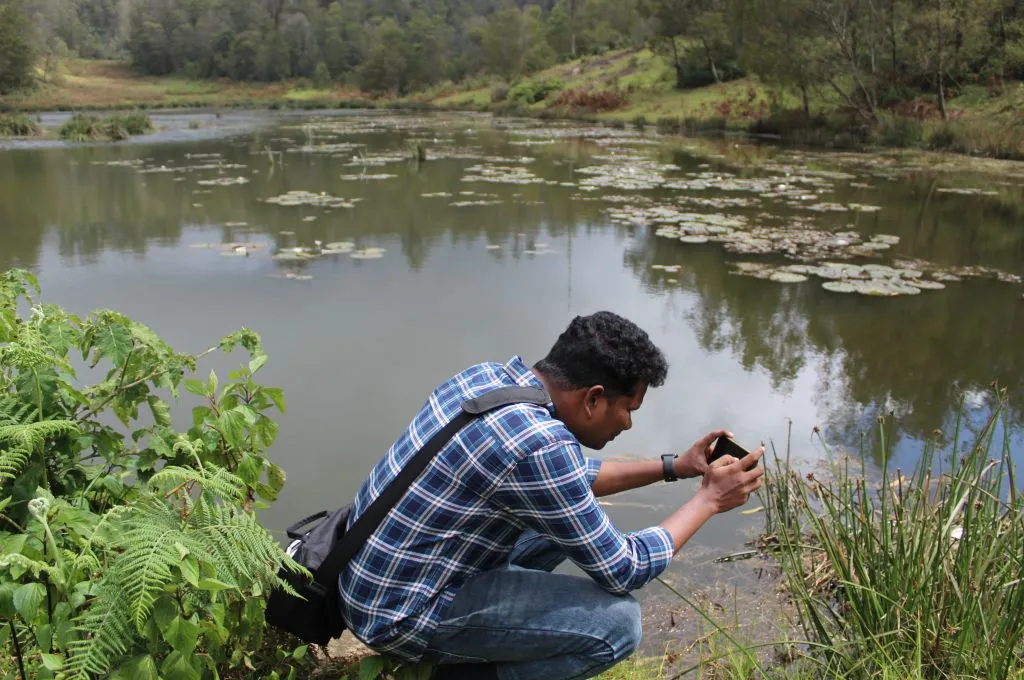The COVID-19 pandemic and the consequent lockdown has had a particularly devastating impact on migrant workers and their households. The imposition of the lockdown has led to many workers being left stranded in their workplace or suffering through long and dangerous journeys back home. Prevailing domicile restrictions for accessing state welfare (including rations), reduced mobility due to lockdown measures, and the stigma associated with being a migrant have left workers in distress and in need of help.
The central government has accelerated relief efforts and inter-state discussions for migrant welfare are underway. However, it is evident that there is still a large dependency on nonprofits and community-based organisations to ensure the delivery of support for the informal sector. In an open letter, the CEO of NITI Aayog cites different ways in which the government seeks support from the social sector, including filling the gaps in public healthcare delivery, creating awareness, and supplementing the efforts of local governments. Whether it is enabling access to state-financed welfare or philanthropic support, nonprofits have stepped up to fill the void in the state’s capacity to deliver welfare.
Related article: How to ensure financial sustainability during COVID-19
However, the key question is: How will they fund this support to state actors? We believe that although the social sector has responded courageously to the COVID-19 crisis, its efforts have been greatly limited by the funding mechanisms available to it. There is an urgent need to unlock new sources of capital for COVID-19 relief and recovery. In what follows, we illustrate this idea specifically for the situation of the informal sector, exploring structured finance solutions to fund nonprofits engaged in relief.
Financing the informal sector
Innovative structures for funding nonprofits such as Social Impact Bonds (SIBs) or Development Impact Bonds (DIBs), and charity funds (such as the HDFC Cancer Fund) have paved the way for even newer forms of financing arrangements that will fund social sector organisations, while also creating incentive structures for performance. Organisations serving migrant workers are particularly well-suited for this kind of financing, provided that the form and content of these financing arrangements are appropriately refined.
A single philanthropic foundation or a single risk investor may not be adequate to address the scale of the problem.
One important area that requires consideration is the role of intermediaries. The structures that have hitherto gathered momentum, channel funds from a single source to a single organisation. For instance, the India Educate Girls impact bond, which is the only completed project of this type in India, was funded by UBS and the beneficiary was Educate Girls.
This kind of structure will not work if we regard the problem of migrant worker relief as one that is essentially local, necessitating the interventions of multiple organisations across the length and breadth of India. Likewise, on the funders’ side, a single philanthropic foundation or a single risk investor may not be adequate to address the scale of the problem. Thus, an intermediary function is essential to manage the pooling of funds from multiple funders or investors, the identification of multiple implementing organisations across different regions, and lastly, the disbursement of funds to these entities.
Enter Social Venture Funds
The intermediary we have in mind here is a Social Venture Fund (SVF). According to SEBI’s Alternative Investment Fund (AIF) regulations, SVFs can be harnessed to channel funds to nonprofits via a grants-in, grants-out structure. The provision to utilise an SVF in this way already exists, per Regulations 2(1)(v), 2(1)(u), and 16(4). But so far, to the best of our understanding, this provision has not been taken advantage of by any nonprofit organisation.

Although the social sector has responded courageously to the COVID-19 crisis, its efforts have been greatly limited by the funding mechanisms available to it. | Picture courtesy: Flickr
Yet, the just released SEBI Social Stock Exchange report specifically calls out that it can be used by nonprofits. For this approach to gain maximum traction, as the report describes, it is important to enable Corporate Social Responsibility (CSR) spends to pass through such a structure, and to clarify or amend Rule 4 of the Foreign Contribution Rules (FCR, 2011) to enable foreign donors to participate as well. This will allow SVFs to source pools of capital that have so far not been available to them.
Related article: Understanding India’s proposed social stock exchange
Intermediary driven SVF structures can create pooled funds, which can be spent towards pre-defined objectives. The SVF could create units (also referred to as tokens) based on the amount of funding from each source, and these units can be used to claim benefits such as ‘CSR certificates’.
A CSR certificate will state that the particular corporate has undertaken a certain amount of CSR expenditure. These can then be traded. Thus, if that corporate has certificates amounting to more than two percent of its profits (which is the mandated minimum), it can sell the certificates representing the ‘excess’ CSR spend to a corporate whose CSR spends have fallen short of two percent of its profits, and which is therefore suffering from a deficit CSR spend. This would allow the latter corporate to meet its own CSR mandate without having to undertake the costly exercise of identifying potential CSR recipients.
This kind of trading activity between excess-CSR spends and deficit-CSR spends could be facilitated through a platform, and the Ministry of Corporate Affairs (MCA) could encourage the formation of such a platform. The Draft CSR Policy Amendment Rules 2020 (which recently came out) already envision the possibility of unspent CSR and provide for a resolution, but through a different route—namely, one in which the corporate which has a deficit-CSR spend would deposit the unspent funds, i.e., the difference between two percent of its profits and the corporate’s actual CSR spend, in a separate account and aim to spend it within three years.
We hope that the urgency of the migrant workers situation will persuade the relevant legislative and regulatory authorities to act quickly and decisively.
Interestingly, an SVF need not be limited to grants-in, grants-out mechanisms alone, but can also house existing structures such as the SIBs/DIBs and other pay-for-success mechanisms, where there is still a necessity for pooling and there is a sharper incentive for pre-defined impact parameters.
Some of the above recommendations can be immediately implemented, while others will require suitably amending the existing regulatory framework governing the flow to capital to nonprofits. For instance, there can be simple amendments to the rules governing CSR to allow for trading of spends; or, the minimum size threshold of AIFs can be lowered from the current INR 20 crore for corpus size and INR 1 crore for ticket size, which would help accelerate the creation of intermediary structures in the short-term.
Related article: CSR is unlikely to fund new grantees this year
We hope that the urgency of the migrant workers situation, coupled with the imperative to activate the support that state governments desire from the social sector, will persuade the relevant legislative and regulatory authorities to act quickly and decisively.
Measuring success
Finally, pay-for-success structures require a measurement of success. In his letter, the CEO of Niti Aayog singled out ten of the most important areas concerning COVID-19 relief, in which states require assistance from nonprofits. If we proceed along similar lines, defining concrete outcomes for the above-mentioned structures in the context of migrant workers should not prove difficult.
It is important that we explore blended finance structures to anchor India’s policy response to COVID-19 and support the nonprofit organisations delivering relief.
As to achieving those outcomes, presumably an impact measurement framework should incorporate both reach and depth dimensions. A basic metric of reach could be the number of migrant workers served, while a basic metric of depth could be the change in the quality of life of the worker (elicited through a simple survey). Given the heightened scrutiny that the condition of migrant workers is receiving from multiple surveying organisations in current times, these metrics will not be costly to conceptualise or measure. The cost of impact reporting can be borne by the intermediary in order to leave the nonprofit to do its work.
There will be challenges in operationalising these solutions. In the immediate-term, creating standardised processes for impact measurement and reporting, and charting a regulatory pathway for these structures will be essential. Nonprofits may also need some handholding to conform to a standardised reporting mechanism, and organisations such as GuideStar, GiveIndia, and Credibility Alliance could be engaged to help with the reporting process.
Despite this, it is important that we explore such blended finance structures—involving both social capital and conventional capital—to anchor India’s policy response to COVID-19 and support the nonprofit organisations that deliver much needed relief to our vulnerable communities.
—
Know more
- Read SEBI’s guidelines and frequently asked questions on SVFs.
- Explore data shared by SEBI related to SVFs, such as funds raised and investments made.
- Understand how innovative financing tools can be leveraged to raise funds to respond to COVID-19.
Do more
- Send in your comments on the social stock exchange report to SEBI at yogitag@sebi.gov.in and abhishekr@sebi.gov.in by July 15, 2020.






